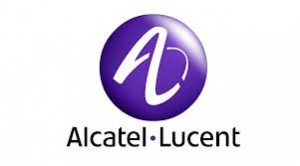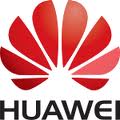 Nuage Networks, an Alcatel-Lucent (Euronext Paris and NYSE: ALU) venture focused on software defined networking (SDN) solutions, has today announced an open software-based solution to address the key datacenter network constraints that limit cloud services adoption. The Virtualized Services Platform (VSP) will allow healthcare, banking, utilities and other enterprise market segments, as well as webscale companies – large Internet-based companies – and telecom service providers, to scale their cloud offers and provide instant, secure connectivity to multiple customers.
Nuage Networks, an Alcatel-Lucent (Euronext Paris and NYSE: ALU) venture focused on software defined networking (SDN) solutions, has today announced an open software-based solution to address the key datacenter network constraints that limit cloud services adoption. The Virtualized Services Platform (VSP) will allow healthcare, banking, utilities and other enterprise market segments, as well as webscale companies – large Internet-based companies – and telecom service providers, to scale their cloud offers and provide instant, secure connectivity to multiple customers.
Trials of the Nuage Networks Virtualized Services Platform begin in April in Europe and North America. Trial customers include UK cloud service provider Exponential-e, French telecoms service provider SFR, Canadian telecoms service provider TELUS and leading US healthcare provider, University of Pittsburgh Medical Center (UPMC). Worldwide commercial availability is planned for mid-2013.
Michel Combes, new CEO of Alcatel-Lucent said: “It’s exciting to start my first day as CEO of Alcatel-Lucent with an announcement that expands our addressable market. Alcatel-Lucent’s SDN strategy and the Nuage Networks branded portfolio announced today builds on the cloud orchestration we already provide with our CloudBand™ Management System. We are very well positioned to help telecom and cloud service providers build large scale cloud infrastructure and services, opening up new revenue opportunities for our customers and ourselves.”
Consumers and business users are driving demand for cloud computing and storage. Current datacenters are well equipped from an IT perspective. Datacenter operators can add or change virtual servers and storage almost instantly to meet customer demands.
But the network isn’t keeping up – it has high capacity, but it’s not flexible enough to make use of that capacity. Network provisioning still requires detailed technical planning, manual configuration and complex systems and processes to connect customers to compute and storage resources. SDN helps solve this problem and IDC forecasts the worldwide SDN market will grow from $360m in 2013 to $3.7Bn by 2016[1].
SDN companies approach the market in different ways. While most first generation SDN solutions solve part of the problem, Nuage Networks’ Virtualized Services Platform (VSP) is a comprehensive solution. VSP automates the entire datacenter network, creating secure “slices” for each customer, changing provisioning time from days to minutes. VSP also scales to support very large datacenters with thousands of customers, each with thousands of users. This makes it suitable for public cloud, private cloud and hybrid cloud services delivered by large enterprises, webscale companies or telecom service providers.
To contrast:
| Requirement | Current (1st Generation) Solutions | Nuage Networks VSP |
| VM Connectivity and Mobility | Within one datacenter (partial or full) | Across multiple datacenters |
| Integration with Service Provider MPLS VPNs | Manual | Seamless, Automated |
| Network Virtualization | L2 with L3/L4 support | Integrated L2-L4 |
| Control Plane | Proprietary | Open/Standards based (BGP) |
| Service Management and Automation | Basic | Policy-based provisioning, abstraction and analytics |
Nuage Networks’ VSP:
· Provides an open, software-only solution that works with OpenStack, CloudStack and VMware cloud environments and any datacenter network switches.
- Delivers seamless network connectivity inside the datacenter, between datacenters as well as datacenter to Enterprise VPN connectivity.
- Improves network utilization and efficiency by up to 40 percent according to Bell Labs studies. In addition, by removing networking constraints we enable unrestricted placement and mobility of compute workloads, driving up to 40 percent increase in server utilization.
- Makes the network available instantaneously no matter where the application is running – even if the application moves to a virtual machine in another rack of servers or to another datacenter.
- Delivers full programmability using a set of standardized APIs in clear IT-friendly language.
- Based on software from Alcatel-Lucent’s Service Router Operating System (SR OS) and its 10 years of reliable, large scale, business-critical network performance worldwide, including 40 of the top 40 telecom service providers.
Quotes
Sunil Khandekar, CEO of Nuage Networks: ”SDN is one of the most exciting and promising new technologies in datacenter networking. At Nuage Networks, we’re focused on getting the network out of the way so that it no longer constrains the server and storage resources or the performance of cloud services. We do that by offering a platform that is technology and layer agnostic. As more companies move to a cloud service environment, we can help them automate their networks to deliver instant connectivity to their customers.”
Mukesh Bavisi, Managing Director of Exponential-e: “At Exponential-e we are operating in a very competitive market and pride ourselves on delivering the most innovative and differentiated services. As such, we are pleased to trial the Nuage Networks SDN solution to meet the dynamic needs of our customers.”
Ibrahim Gedeon, Chief Technology Officer at TELUS said: “TELUS is investing in multi-tenant datacenter infrastructures to deliver the most innovative cloud services to our customers. The value we expect to see from SDN technologies is exactly along the lines of the Nuage Networks proposition of a virtualized and automated datacenter network infrastructure that gives us the agility to turn up cloud services very quickly while connecting seamlessly to the VPN services our business customers consume today. We commend Nuage Networks on their approach.”
William Hanna, vice president of IT infrastructure at UPMC said: “UPMC has been a leader in virtualizing our data centers to provide fast, reliable and flexible services to our clinicians and other customers in a rapidly changing healthcare landscape. With the Nuage Networks SDN solution, we hope to further our strategy of using smart technology to support patient-centered, accountable care.”




